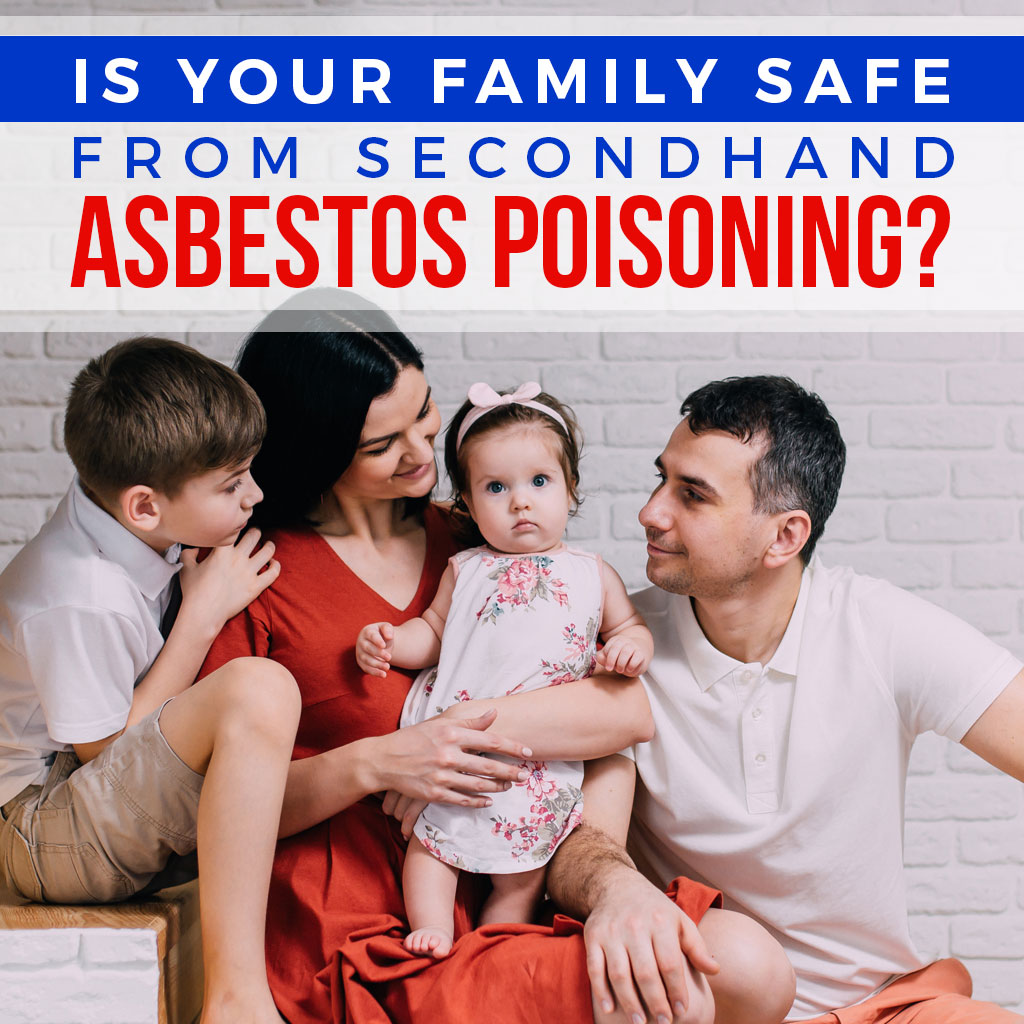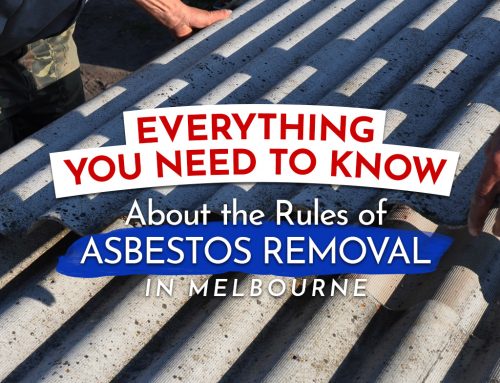You might know about the dangers of inhaling secondhand smoke, but have you ever heard about secondhand asbestos poisoning?
It’s not new–it’s been around ever since humans first started handling asbestos. But what’s disturbing is that an individual can slowly become a victim of secondhand asbestos poisoning without realizing it until it’s too late. And it can be even more heartbreaking for workers who’ve indirectly caused their loved ones to contract asbestos-related diseases.
Wouldn’t you want to protect your family from secondhand asbestos poisoning? Find out all you need to know about this silent killer, from how it occurs to how you can prevent it in the first place.
What Your Family Needs to Know About Secondhand Asbestos Poisoning
Primary asbestos poisoning is when someone works directly with asbestos and experiences negative health effects because of accumulated fibers in the lungs. Individuals in certain industries like automotive, shipbuilding, construction, and manufacturing run the highest risk of primary asbestos poisoning.
Secondary asbestos poisoning or paraoccupational exposure is when an individual inhales asbestos fibers despite not working in a high-risk industry. It is also referred to as home exposure because it often results from workers carrying fibers with them into their homes. Historical accounts from Wittenoom include several examples of secondhand asbestos poisoning, where miners embrace their wives and children while still covered in asbestos tailings.
How Does Secondhand Asbestos Poisoning Happen?
There are a number of ways that secondhand asbestos poisoning can occur, all involving the transfer of fibers to supposedly non-risky areas and surfaces:
• Fibers adhering to a worker’s hands, hair, shoes or tools and rubbing off when the individual gets home
• Family members embracing a worker who is still wearing contaminated clothing
• Family members shaking out and washing work clothes from a high-risk site
• Contaminated clothes being placed in the same load as uncontaminated clothes
• Asbestos-contaminated air or dust reaching supposedly non-risky areas
• Mining or blasting of asbestos rock, resulting in asbestos-contaminated air or dust
• Outdoor recreation near exposed asbestos rock or areas contaminated with asbestos tailings
One characteristic that makes asbestos so dangerous is its indestructibility. Asbestos fibers that get embedded in clothes, sheets, and furnishings can remain there permanently. They may also become suspended in the air. This means that family members can be exposed to asbestos for up to 24 hours a day, unlike partial exposure that occurs in the workplace.
Aside from this, asbestos fibers do not have a particular taste or odor to warn people of their presence. Members of a household can inhale asbestos fibers without noticing it.
How Dangerous is Secondhand Asbestos Poisoning?
The effects of secondhand asbestos poisoning may not be apparent for decades, like with countless “Wittenoom kids” exposed to blue asbestos in their childhood. However, family members of high-risk workers can ultimately contract the same health problems caused by primary asbestos poisoning, including:
• Mesothelioma – cancer of the mesothelium, or the sac that protects the organs and lines the chest and abdominal cavities
• Asbestosis – pulmonary fibrosis caused by asbestos fibers scarring the air sacs in the lungs
Secondhand asbestos poisoning also increases an individual’s risk for:
• Lung cancer
• Cancers of the gastrointestinal tract and ovaries
• Various non-cancerous lung abnormalities, including folded lung syndrome
Am I at Risk of Secondhand Asbestos Poisoning?
Unfortunately, everyone is indirectly exposed to a minute amount of asbestos at some point in their lives. But you can ask yourself the following questions to estimate your risk for secondhand asbestos poisoning and its related health complications:
• Have you resided with a person in a high-risk occupation that dealt with asbestos?
• How were you exposed to asbestos? Did you wash your high-risk housemate’s clothes, come into physical contact with them, or share living spaces or transportation?
• How often and how intense were these exposures?
• Were you exposed to asbestos in other settings and other times?
• Were you exposed to asbestos in your childhood? Did your family members have asbestos-related occupations when you were younger?
• Have you lived near any facility that processes asbestos?
What Can I Do to Prevent Secondhand Asbestos Poisoning?
You’ll be relieved to know that secondhand asbestos poisoning is completely avoidable, for all the dangers it poses. Just make it a point to adhere to the following steps, especially for workers in high-risk industries:
• Thoroughly wash or shower and change clothes before leaving work
• Avoid storing and washing work and street clothes together
• Wash work clothes at your workplace if possible
• Exercise care when handling asbestos-contaminated clothes
• Use doormats and remove shoes before entering the house
• Clean the house of tracked in dust or soil regularly
• Leave tools at work if you can. If you must bring them with you, store them in an area where children and loved ones cannot access them
• Get family members into the habit of thoroughly washing hands and faces before meals
What Do I Do if I’ve Been Affected by Secondhand Asbestos Poisoning?
If you or your loved one runs a high risk for secondhand asbestos poisoning, check in with a doctor. This can help catch symptoms of asbestos-related diseases early. Some signs of disease can include coughing or shortness of breath that worsens over time instead of going away.
Your doctor may take a closer look at your lungs with a CT scan or chest X-ray. They may also ask you to blow into a spirometer to determine how well your lungs still work.
Can I File a Case for Secondhand Asbestos Poisoning?
Yes, you may file a case against the company responsible if you or your family member has become ill from secondhand asbestos poisoning. A court or an experienced asbestos attorney will help you answer these two questions to determine the type of compensation you should receive:
1. Was the risk of secondary exposure foreseeable from the employer’s point of view?
2. What should the employer have done to prevent the poisoning?
One well-known case of secondhand asbestos poisoning is that of Winnifred Brennan, who contracted mesothelioma from washing her carpenter husband’s work clothes. James Hardie Ltd. ultimately paid her a $374,166 claim after Mrs. Brennan’s disease was ruled “foreseeable and preventable.”
In another secondhand exposure case, English professor John Panza Jr. filed a lawsuit against National Friction, which employed his father at a brake plant for over 30 years. Panza would help his father wash his work clothes. He eventually contracted mesothelioma in 2012. In the end, Panza and his wife won $27.5M in compensation from the Kelsey-Hayes Company, the successor to National Friction.
Still have concerns regarding secondhand asbestos poisoning? Get your answers from asbestos removal experts like those of AWARE. Our A-Class license ensures that we have the training and experience to help prevent secondhand asbestos poisoning. You can count on us to safely remove asbestos from workplaces or help you properly dispose of contaminated items and protect your family. Contact us today for inquiries!
Visit our blog regularly for more informative articles and tips on preventing asbestos poisoning.





